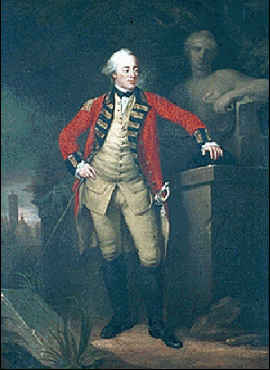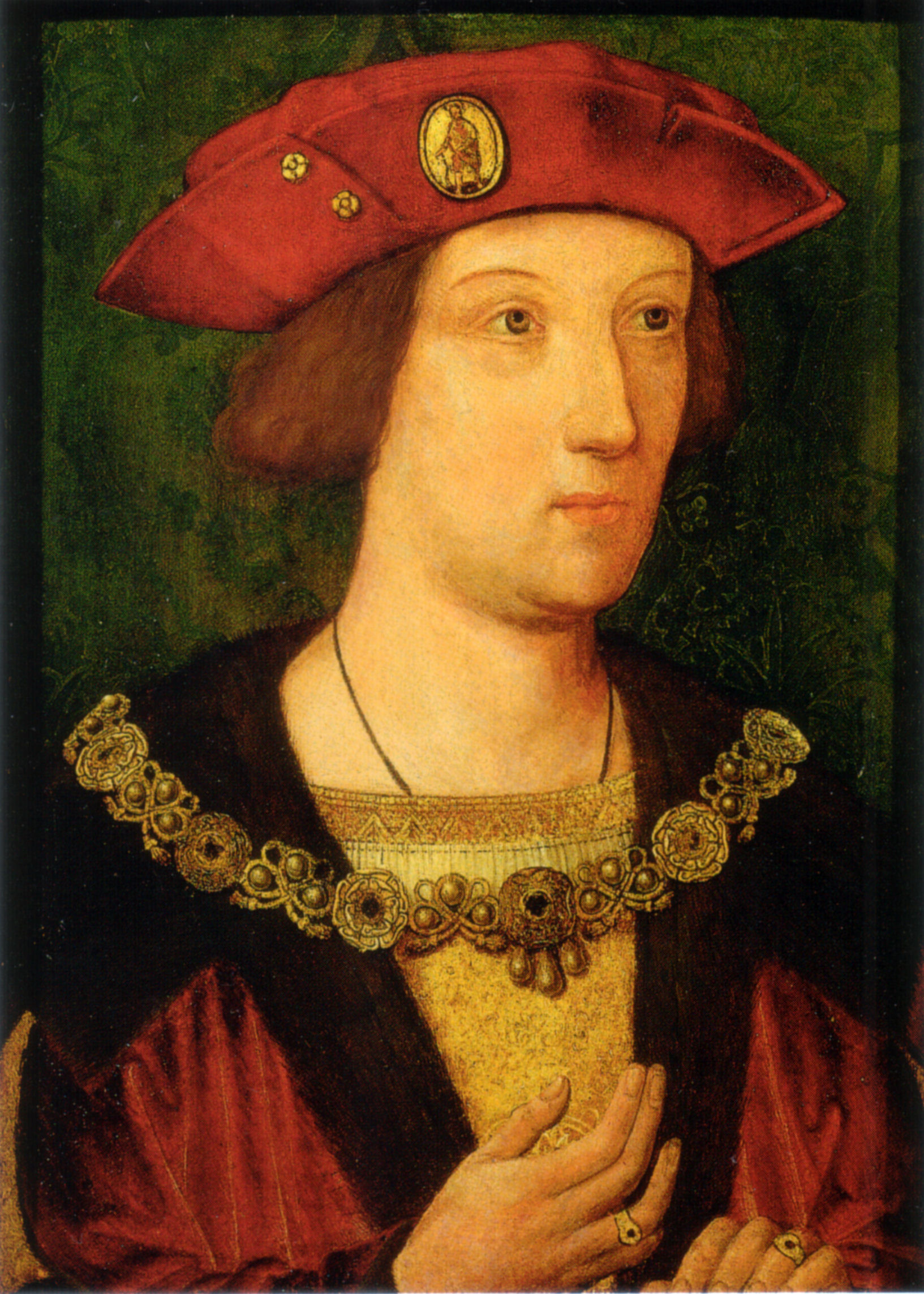by Susan Flantzer
© Unofficial Royalty 2024

Johann Ludwig von Wallmoden, Count von Wallmoden; Credit – Wikipedia
The early kings from the British House of Hanover did not publicize their illegitimate children. Born on April 22, 1736, in Hanover in the Electorate of Hanover, now in the German state of Lower Saxony, Johann Ludwig von Wallmoden was the illegitimate son of King George II of Great Britain (reigned 1727 – 1760) and Amalie von Wallmoden, Countess of Yarmouth, George II’s mistress from 1735 until he died in 1760. Johann Ludwig’s paternal grandparents were King George I of Great Britain and Sophia Dorothea of Celle, Electoral Princess of Hanover. His maternal grandparents were Hanoverian General Johann Franz von Wendt and Friederike Charlotte von dem Bussche-Ippenburg.
In 1727, Johann Ludwig’s mother Amalie von Wendt married Count Adam Gottlieb von Wallmoden and the couple had two children, Johann Ludwig’s half-siblings:
- Franz Ernst von Wallmoden (1728 – 1776)
- Friederike von Wallmoden (1729 – 1800)

Johann Ludwig’s parents, King George II of Great Britain and Amalie von Wallmoden
Amalie met King George II in 1735 while he was visiting his Electorate of Hanover, and they quickly began an affair that would last for the next twenty-five years. Her husband was paid off to turn a blind eye to the affair. When Amalie gave birth to Johann Ludwig, he was registered as being her husband’s child.
Johann Ludwig had eight royal half-siblings from his father’s marriage with Caroline of Ansbach:
- Frederick, Prince of Wales (1707 – 1751), married Princess Augusta of Saxe-Gotha, had eight children, including King George III of the United Kingdom and Caroline Matilda of Wales, Queen Consort of Denmark and Norway
- Anne, Princess Royal (1709 – 1759), married Willem IV, Prince of Orange, had three children including Willem V, Prince of Orange but only two survived to adulthood
- Princess Amelia (1711 – 1786), unmarried
- Princess Caroline (1713 – 1757), unmarried
- Prince George William (1717 – 1718), died in infancy
- Prince William, Duke of Cumberland (1721 – 1765), unmarried
- Princess Mary (1723 – 1772), married Friedrich II, Landgrave of Hesse-Kassel, had four sons
- Princess Louise (1724 -1751), married Frederik V, King of Denmark and Norway, had five children including Sophia Magdalena, Queen Consort of Sweden and King Christian VII of Denmark and Norway
Thoroughly smitten with Amalie, King George II continued to visit Hanover specifically to see her. Correspondence shows he discussed the relationship extensively with his wife Queen Caroline and Prime Minister Robert Walpole. Meanwhile, his constant absence from London was causing him to lose the support of many in Great Britain. Sensing this, Walpole encouraged Queen Caroline to suggest to her husband that he return to England and bring Amalie with him. However, King George II felt it would be inappropriate and chose to continue his trips back and forth to Hanover.
After Queen Caroline died in 1737, George finally called for Amalie to join him in England. Upon her arrival in early 1738, Amalie, accompanied by two-year-old Johann Ludwig, was given apartments in St. James’s Palace, King George II’s primary residence, and Kensington Palace. The following year, Amalie was divorced from her husband, who received an annual pension of £4,000 from King George II.
In 1740, Amalie became a naturalized citizen of Great Britain, and on March 24, 1740, she was granted a life peerage as Countess of Yarmouth and Baroness Yarmouth in the County of Norfolk in her own right. This would be the last time a British royal mistress would be given a peerage title. After King George II died in 1760, Amalie received an annuity of £10,000 and retained her apartments in the palaces, but soon returned to her native Hanover. Five years later, on October 19, 1765, Amalie von Wallmoden, Countess of Yarmouth, died of breast cancer at the age of 61.
Johann Ludwig was brought up at his father’s court. As King George II’s son, he received a comprehensive education and when his education was complete, Johann Ludwig went on a grand tour of Italy. During his grand tour of Italy, Johann Ludwig began to collect art and antiquities under the expert guidance of Johann Joachim Winckelmann, an art historian and archaeologist. After his grand tour of Italy, Johann Ludwig joined the Hanoverian Army and rose to the rank of major general.

Wallmoden Palace; Credit – Von Christian A. Schröder (ChristianSchd) – Eigenes Werk, CC BY-SA 4.0, https://commons.wikimedia.org/w/index.php?curid=44610341
In what is now the Georgengarten in the German city of Hanover, Johann Ludwig built Wallmoden Palace, especially for his art collection. At the time of his death, Johann Ludwig’s private collection consisted of at least 549 paintings and 80 sculptures, of which 44 were ancient sculptures from the 1st to 3rd centuries, and a collection of 8,000 books. The sculptures and books were left to Johann Ludwig’s nephew King George III of the United Kingdom. In 1818, the collection of paintings was auctioned and sold to buyers around the world. The sculpture collection is still owned by the House of Hanover, whose current Head of House is Ernst August V, Hereditary Prince of Hanover, Duke of Brunswick. The sculpture collection was on permanent loan to the Archaeological Institute of the University of Göttingen from 1979 to 2023. In May 2023, Ernst August V of Hanover announced that he had terminated the loan agreement and that the sculpture collection returned to Hanover on June 1, 2023.
Johann Ludwig married two times. On April 18, 1766, in the Electorate of Hanover, now in the German state of Lower Saxony, Johann Ludwig married Charlotte Christiane Auguste Wilhelmine von Wangenheim who died on July 21, 1783, aged forty-three.
Johann Ludwig and Charlotte had five children:
- Ernst Georg August von Wallmoden (1767 – 1792), unmarried
- Ludwig Georg Thedel von Wallmoden (1769 – 1862), unmarried, General of the Cavalry in the Imperial Army of the Austrian Empire
- Georgine Charlotte Auguste von Wallmoden (1770 – 1859), married (1) Baron Karl August von Lichtenstein, no children, divorced (2) Count Friedrich Abraham Wilhelm von Arnim-Zichow, had four children, divorced (3) Charles Henri, Marquis le Marchant de Charmont, no children
- Wilhelmine Magdalene Friederike von Wallmoden (1772 – 1819), married Heinrich Friedrich Karl vom und zum Stein, had two children
- Friedrike Eleonore Juliane von Wallmoden (1776 – 1826), married Ludwig Friedrich Count von Kielmansegg, had three children
After the death of his first wife, Johann Ludwig married Baroness Luise Christiane von Lichtenstein on August 3, 1788, in Bückeburg, then in the Principality of Schaumburg-Lippe, now in the German state of Lower Saxony.
Johann Ludwig and Luise Christiane had three children:
- Karl August Ludwig von Wallmoden (1792 – 1883), Austrian Privy Councillor and Lieutenant Field Marshal in the Imperial Army of the Austrian Empire, married Countess Zoe von Grünne, no children
- Adolf Franz James Wilhelm von Wallmoden (1794 – 1825), unmarried
- Luise Henriette von Wallmoden (1796–1851), married Karl Julius Heinrich von Rottenhan, had five children

Church of Heinde; Credit – Gemeinfrei, https://commons.wikimedia.org/w/index.php?curid=209734
Johann Ludwig von Wallmoden died on October 10, 1811, aged 75, in the Electorate of Hanover. He was buried in the von Wallmoden family’s hereditary burial site below the tower of the Church of Heinde in Heinde now in the German state of Lower Saxony.
This article is the intellectual property of Unofficial Royalty and is NOT TO BE COPIED, EDITED, OR POSTED IN ANY FORM ON ANOTHER WEBSITE under any circumstances. It is permissible to use a link that directs to Unofficial Royalty.
Works Cited
- Autoren der Wikimedia-Projekte. (2007). Generalmajor und Kunstsammler. Wikipedia.org; Wikimedia Foundation, Inc. https://de.wikipedia.org/wiki/Johann_Ludwig_von_Wallmoden-Gimborn
- Autoren der Wikimedia-Projekte. (2021). Kirchengebäude in Heinde in Niedersachsen. Wikipedia.org; Wikimedia Foundation, Inc. https://de.wikipedia.org/wiki/Kirche_von_Heinde
- Autoren der Wikimedia-Projekte. (2023). Sammlung von antiken, römischen Skulpturen. Wikipedia.org; Wikimedia Foundation, Inc. https://de.wikipedia.org/wiki/Sammlung_Wallmoden
- Beauclerk-Dewar, Peter & Powell, Roger. (2006). Right Royal Bastards – The Fruits of Passion. Burke’s Peerage & Gentry LLC.
- Flantzer, Susan. (2015). King George II of Great Britain. Unofficial Royalty. https://www.unofficialroyalty.com/king-george-ii-of-great-britain/
- Mehl, Scott. (2020). Amalie von Wallmoden, Countess of Yarmouth, Mistress of King George II of Great Britain. Unofficial Royalty. https://www.unofficialroyalty.com/amalie-von-wallmoden-countess-of-yarmouth-mistress-of-king-george-ii-of-great-britain/
- Weir, Alison. (2008). Britain’s Royal Families – The Complete Genealogy. Vintage Books.
- Wikipedia Contributors. (2024). Johann Ludwig von Wallmoden. Wikipedia; Wikimedia Foundation. https://en.wikipedia.org/wiki/Johann_Ludwig






